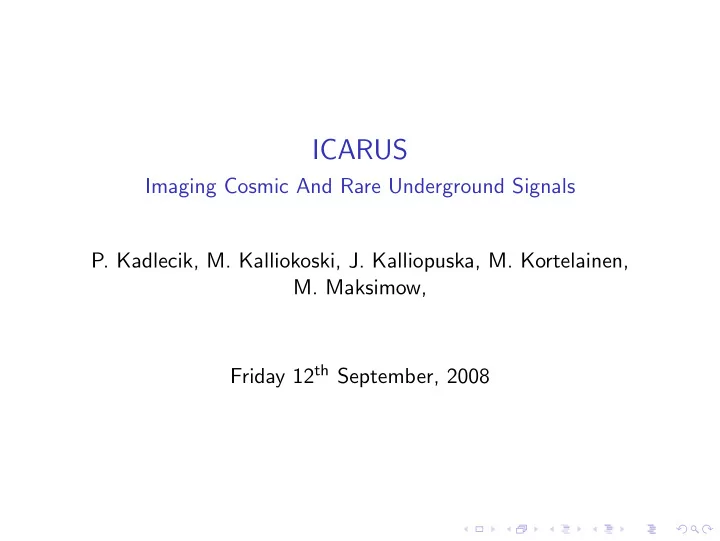

ICARUS Imaging Cosmic And Rare Underground Signals P. Kadlecik, M. Kalliokoski, J. Kalliopuska, M. Kortelainen, M. Maksimow, Friday 12 th September, 2008
Physics aims
Construction ICARUS T600 ◮ Technology first proposed by C. Rubbia in 1977 ◮ First proposal 1985, first test run 2001 (half T600) ◮ In principle it is EM calorimeter ◮ Underground ◮ Large cryostat divided in 2 identical, adjacent half-modules ◮ Internal dimensions 3 . 6 × 3 . 9 × 19 . 9 m 3 per module ◮ 300 t of liquid argon (LAr) per module
Basic principles ◮ Large volume of LAr ensures that most of charged particles are stopped ◮ If particle (e.g. µ ) is not stopped, momentum is measured using multiple scattering and d E / d x capability of TPC is used ◮ Energy resolution (T1800) 11 % σ E = √ E (MeV) for E < 50 MeV ◮ 3 % E = E (GeV) ⊕ 1 % for EM showers σ √ ◮ ◮ Momentum resolution is about 20 % for 10 GeV muons ◮ Tracking is provided by a suitable set of electrodes (wires) at the end of drift path ◮ Wire pitch 3 mm ◮ Resolution 250 µ m along drift direction and 1 mm for other directions
Advantages ◮ Argon is easily available, has high electron mobility and possibility for purification ◮ Calorimetry and tracking ◮ Fully electronic ◮ Large homogenous tracking medium ◮ Wide neutrino energy range ◮ Electron lifetime longer than maximal drift time
Disadvantages ◮ EM calorimeter only ◮ Some particles escape from the volume ◮ Not completed (2 × 2 T600 modules missing)
Recommend
More recommend